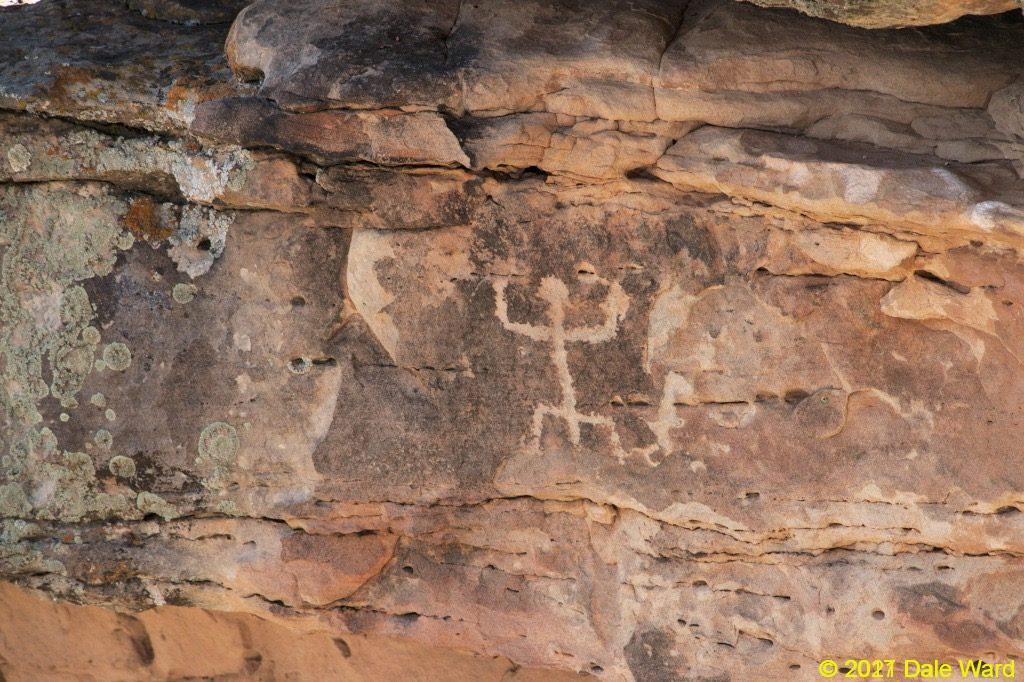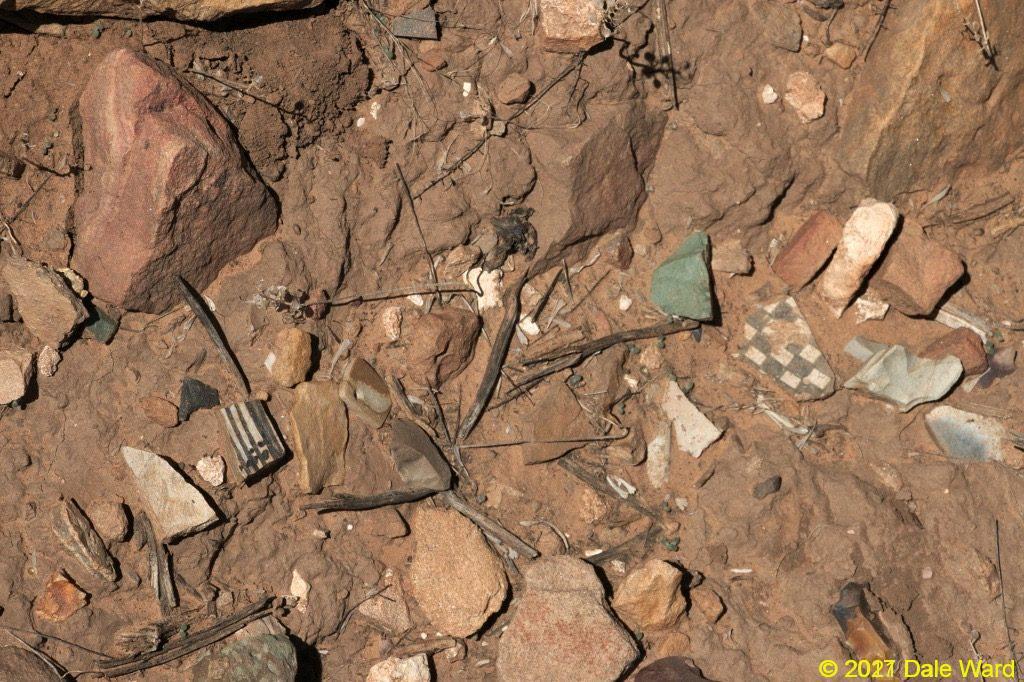Yellow Jacket Pueblo
A few weeks ago, I went on a tour of the Yellow Jacket Pueblo site. The site is owned by The Archaeological Conservancy, an organization that purchases and preserves archaeological sites. As far as I can tell, they are sort-of like The Nature Conservancy, but for archaeology.
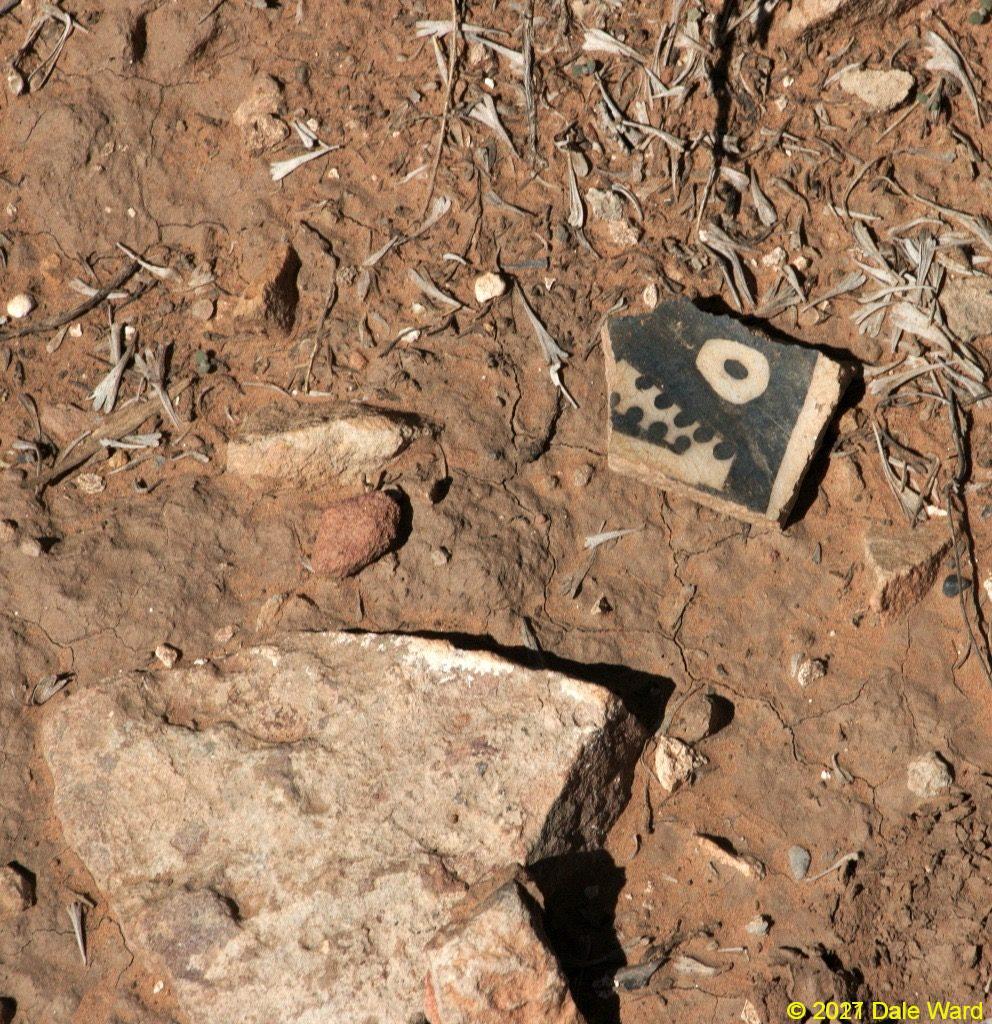 Potsherd at Yellow Jacket Pueblo
Potsherd at Yellow Jacket Pueblo
Barbara Stagg, who is the steward of the site, organized and led the tour. Our group size was limited to about twenty people, with a long waiting list.
I was extremely lucky to have the chance to go. And it was a grand time indeed.
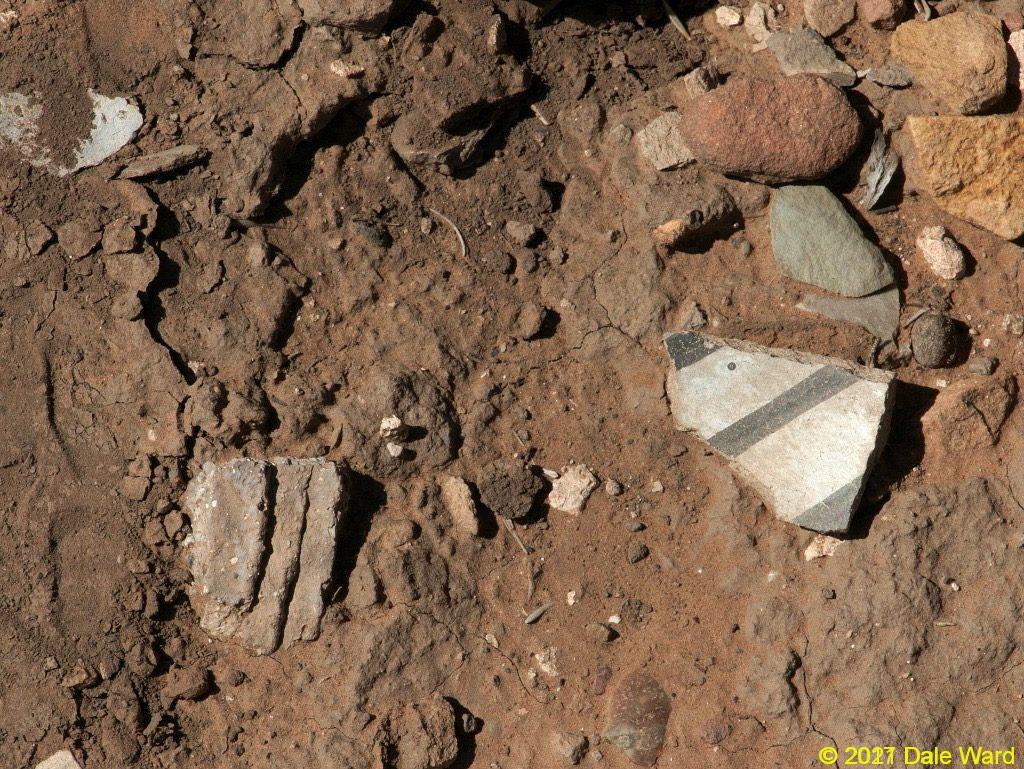 Potsherds at Yellow Jacket Pueblo
Potsherds at Yellow Jacket Pueblo
I’ve been reading about the ruins in our area, so was especially pleased by this opportunity to see this, one of the largest local sites. The scope of the site is astonishing. The site covers about 140 acres. There are approximately 1,200 rooms, 18 towers and roughly 200 kivas.
This place in its prime must have been absolutely humming with activity.
Most of the structures now are rubble piles and earthen mounds, overgrown with sage brush.
Less than 1% of the site has been excavated, and there’s not enough information to know if this site experienced raids similar to those of Sand Canyon, Castle Rock, and others in the area. This was one of the first large local sites abandoned during the tough times around 1280, so perhaps they left before the worst of the violence.
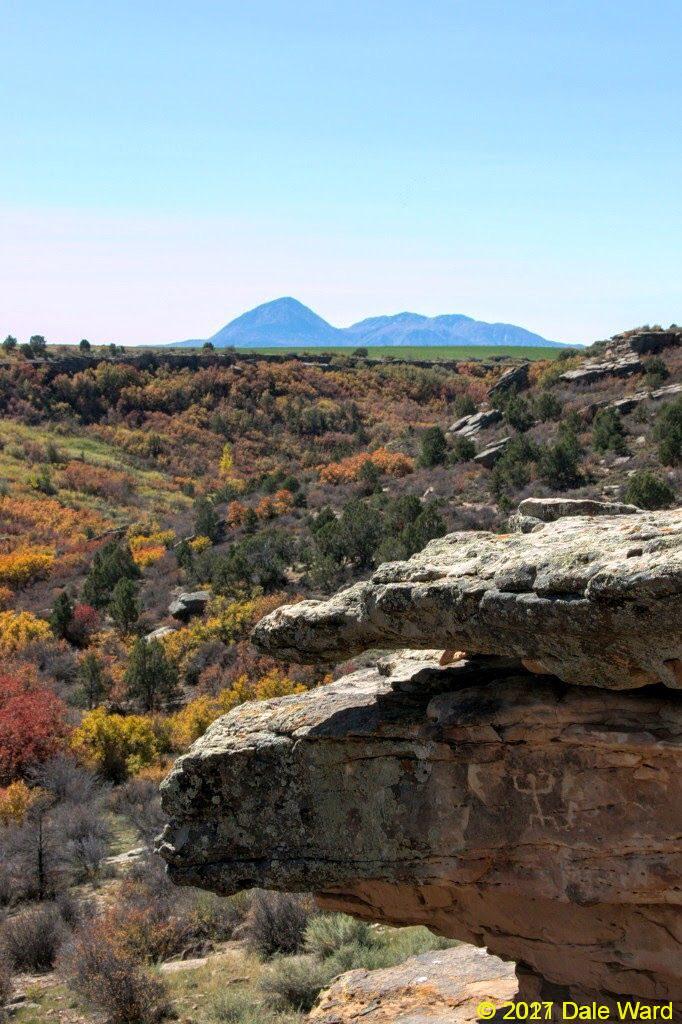 Sleeping Ute Mountain from Yellow Jacket Pueblo. Lizard Man petroglyph in the foreground.
Sleeping Ute Mountain from Yellow Jacket Pueblo. Lizard Man petroglyph in the foreground.
Seeing the area, and the ruins in the context of the landscape, was fascinating.
For me, though, what really added life to our visit of the site was the potsherds. As we walked through the sage, around the mounds of the ruins, we’d find areas that were covered in sherds. It’s one thing to academically know that these ruins were populated. But to see this evidence of every-day life scattered about…Huh. People really did live here.
We’d pick the sherd up, call people over to look at it if it were especially beautiful, then put it back where we found it.
My favorite sighting…at one spot near a ruin mound, there was a Western Harvester Ant (Pogonomyrmex occidentalis) nest. The nest mound had potsherds mixed in the gravel and scattered around the nest. Made me think of the nature of civilizations, their rise, their fall.
Oh, how very cool. I’m a sucker for that sort of thing.
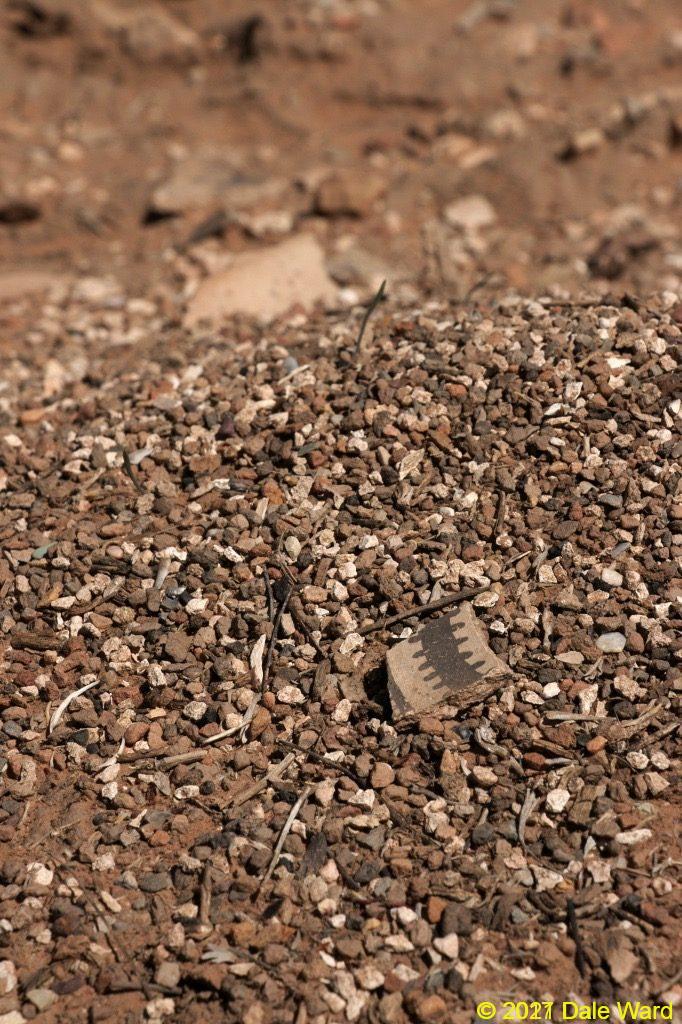 Western Harvester Ant nest with potsherd on the nest’s gravel mound
Western Harvester Ant nest with potsherd on the nest’s gravel mound
We continued along through the sage brush, scanning the ground. Every now and then somebody would cry out delightedly as they found something neat…a potsherd, a hammer stone, a polishing stone.
The depth of knowledge of the people in this tour group was astonishing. I could have listened to them speak for hours.
The feeling of excitement, scanning the ground for literal pieces of the past, reminded me of another trip that I took recently, with my sister and nephew. This was to the Calvert Cliffs in Maryland. We were looking for fossil shark teeth.
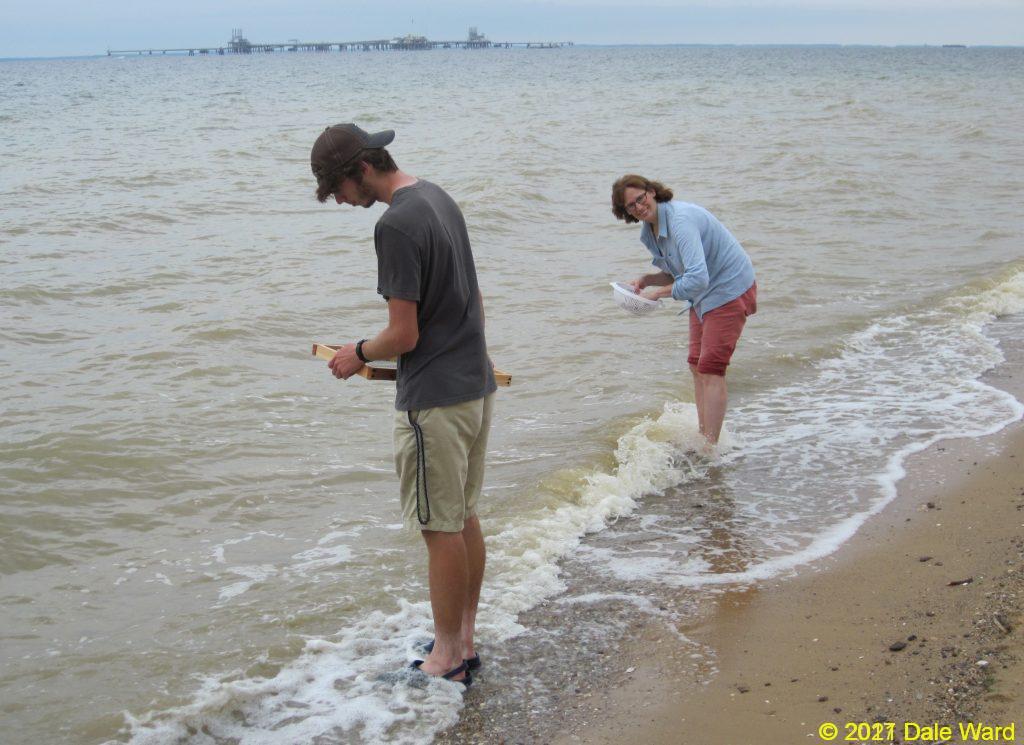 Looking for fossilized shark teeth at the Calvert Cliffs, Maryland.
Looking for fossilized shark teeth at the Calvert Cliffs, Maryland.
Both events had the same sort of joyous, I-can’t-quite-believe-this feeling about it. The feeling that what you were finding was, or should be, impossible.
I mean…fossilized shark teeth? Here? And 800 year old pottery sherds? Here?
I say again, how grand.
